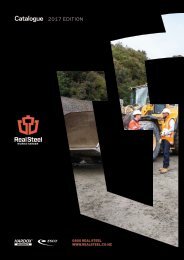July 2018 Curriculum
Create successful ePaper yourself
Turn your PDF publications into a flip-book with our unique Google optimized e-Paper software.
Numeracy<br />
In Mathematics and Statistics, students develop the ability to think<br />
creatively, critically, strategically and logically by exploring relationships<br />
in quantities, space and data as they learn to make sense of the world<br />
around them.<br />
Number and Algebra<br />
• Teach knowledge explicitly<br />
• Ensure real life context<br />
• Revisit strategies regularly<br />
• Balanced Programme – Numeracy<br />
(70%) vs Strand (30%), depending<br />
on age level<br />
• Lots of hands on equipment<br />
• 1 hr lessons, 4 days a week<br />
• Ability groups<br />
• Identify ‘next steps’<br />
• Progress systematically through<br />
Numeracy stages appropriate to<br />
individual abilities.<br />
Geometry, Measurement<br />
and Statistics<br />
• Use ‘hands on’ equipment<br />
• Take learning opportunities that<br />
arise within a real life context<br />
• Explicit lessons that are<br />
practically based<br />
• Use standard and non-standard units<br />
of measurement<br />
• Teach the Statistical cycle<br />
• Teach analysis of data and graphs<br />
• Teach Probability<br />
Assessment<br />
• PAT – Seniors (Term 2 & 4)<br />
• NUMPA or JAM – Juniors (Term 2 & 4)<br />
• Basic Facts Testing<br />
• Groups (Flexible)<br />
• Peer/Self Assessment<br />
• Diagnostic tests<br />
• Numeracy Snapshots<br />
• Teacher Observations<br />
• 4 x 1 hour Maths lessons per week






